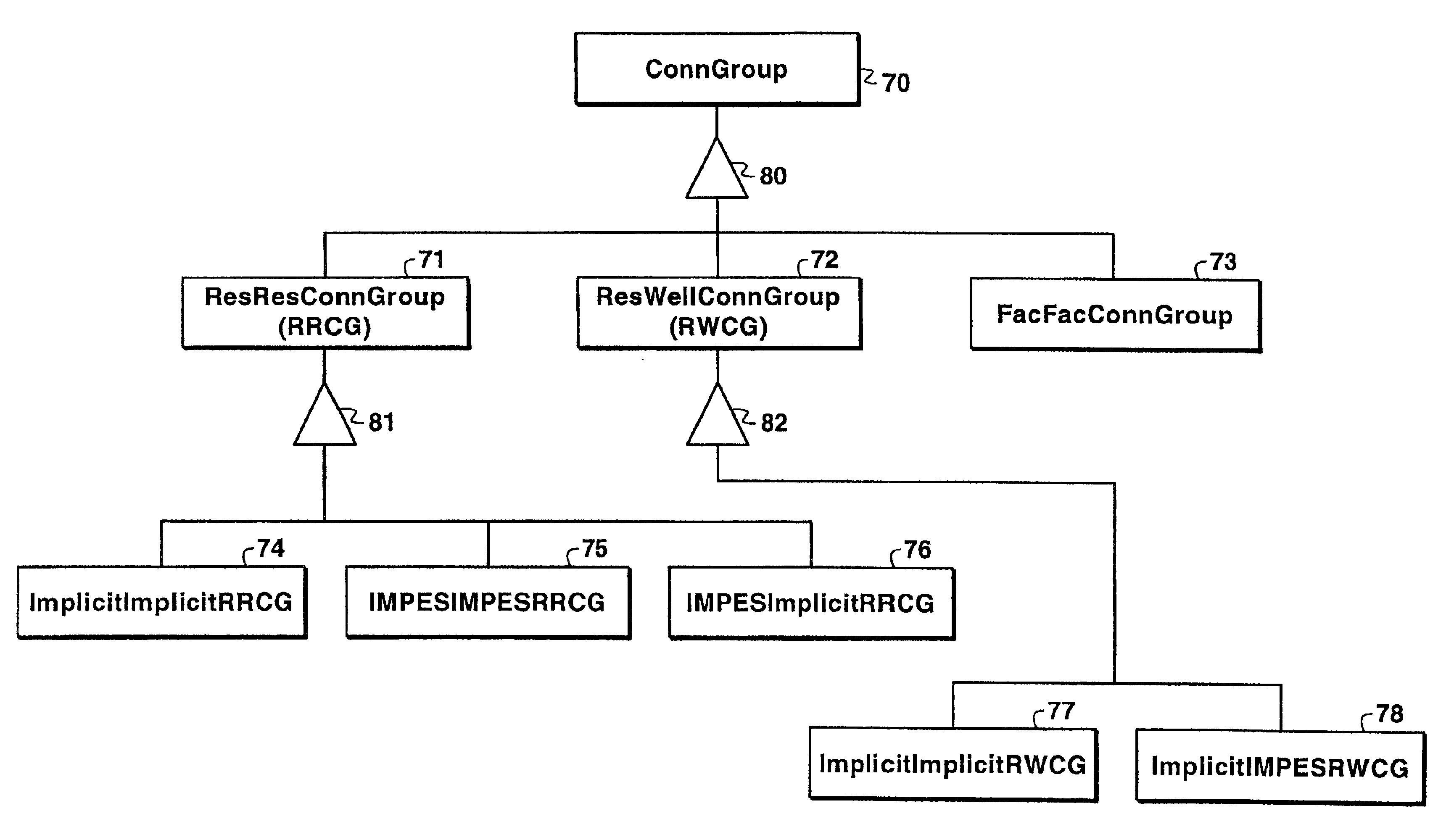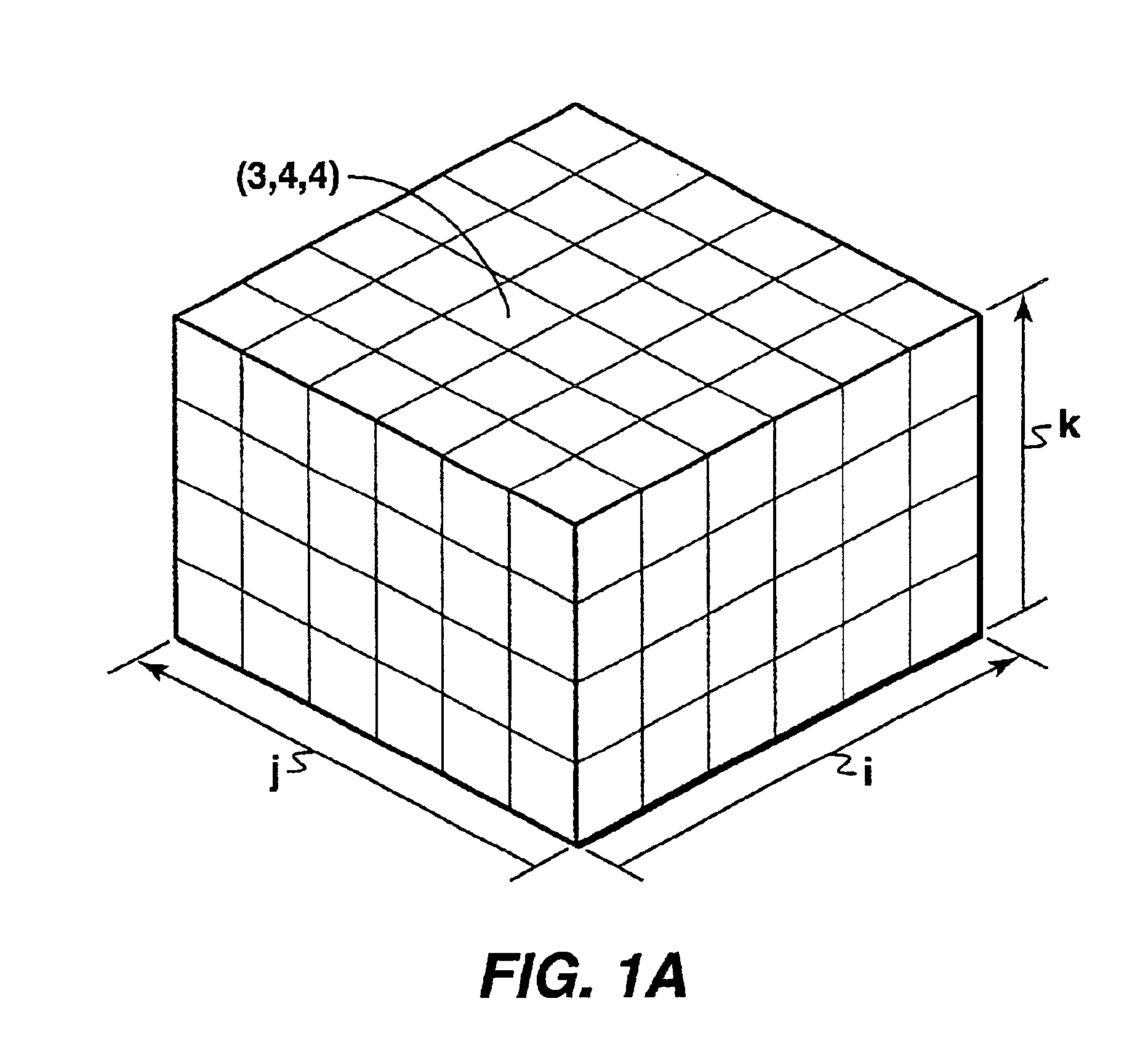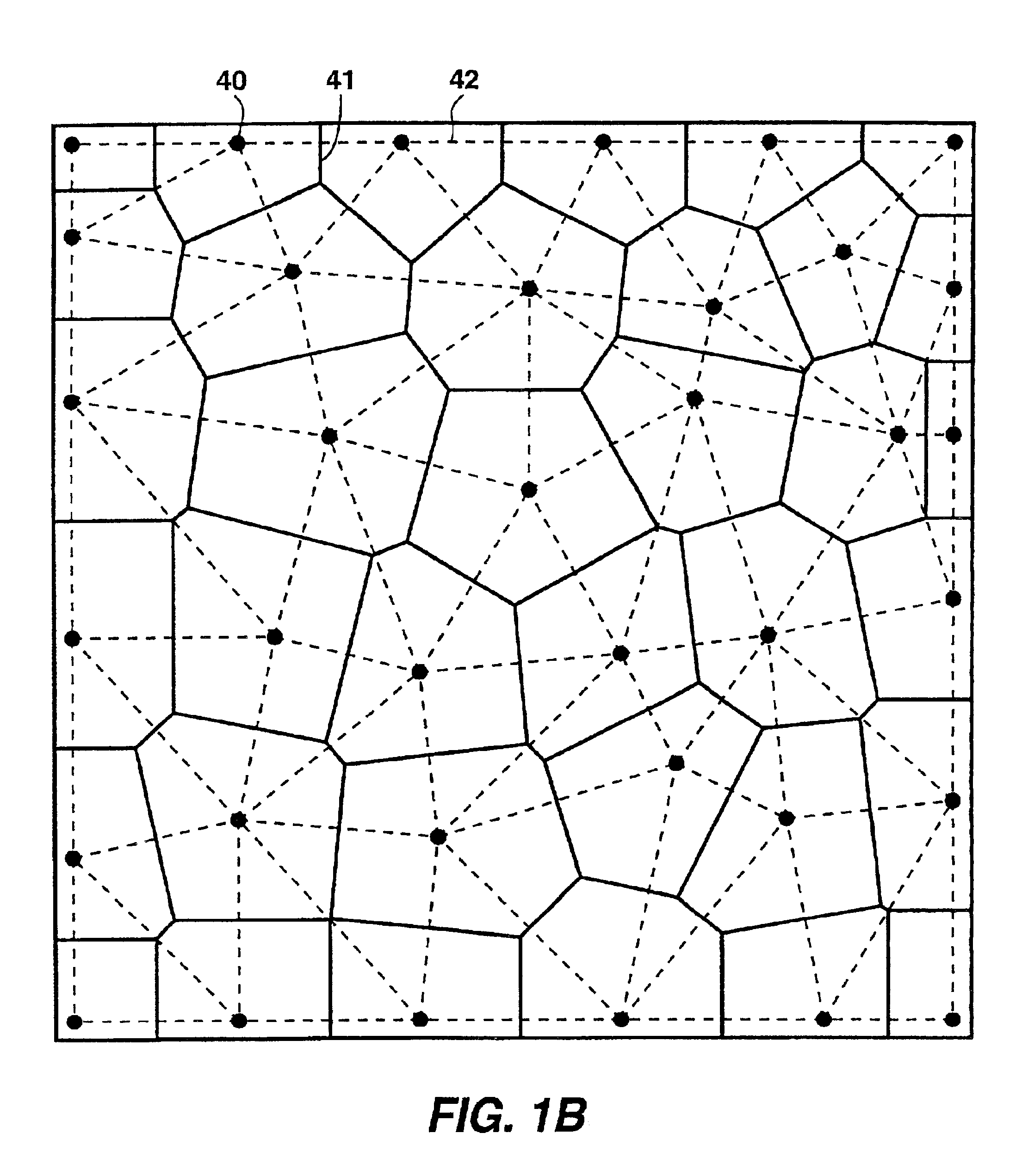Method and program for simulating a physical system using object-oriented programming
- Summary
- Abstract
- Description
- Claims
- Application Information
AI Technical Summary
Problems solved by technology
Method used
Image
Examples
Embodiment Construction
[0061]The present invention provides a new method for simulating a physical system that is numerically represented by partial differential equations. The method can be used in simulating two- and three-dimensional domains that are discretized into structured grids, unstructured grids, or a combination of both. The method can also be used in situations in which the computational approach yields a topology having more than three dimensions, such as occurs in simulating fluid flow through fractured porous media The invention is particularly useful in simulating a characteristic of a physical system in which a transport phenomenon is occurring. The term “transport phenomena” as used in this description is used in a broad sense to include momentum transport (viscous flow), energy transport (heat conduction, convection, and radiation), and mass transport (diffusion). The present invention can be applied to widely different areas such as physics, rock characterization, crystallography, ele...
PUM
 Login to View More
Login to View More Abstract
Description
Claims
Application Information
 Login to View More
Login to View More - R&D
- Intellectual Property
- Life Sciences
- Materials
- Tech Scout
- Unparalleled Data Quality
- Higher Quality Content
- 60% Fewer Hallucinations
Browse by: Latest US Patents, China's latest patents, Technical Efficacy Thesaurus, Application Domain, Technology Topic, Popular Technical Reports.
© 2025 PatSnap. All rights reserved.Legal|Privacy policy|Modern Slavery Act Transparency Statement|Sitemap|About US| Contact US: help@patsnap.com



